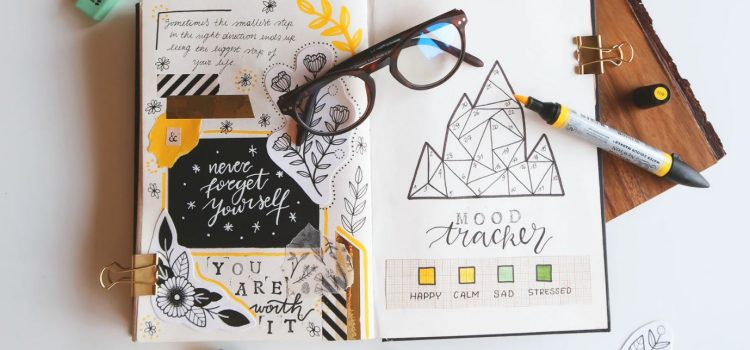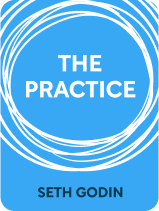

This article is an excerpt from the Shortform book guide to "The Practice" by Seth Godin. Shortform has the world's best summaries and analyses of books you should be reading.
Like this article? Sign up for a free trial here.
Is creativity a skill? How can you learn creativity?
The Practice by Seth Godin argues that creativity does not require that you be touched by the “muse.” It doesn’t require genius or suffering or even confidence. Instead, creativity is a skill that can be learned.
Read more to learn why Godin believes anyone can be a creative mastermind.
What Is the Practice?
Is creativity a skill? In The Practice, Godin dismantles the myth that successful artists, writers, musicians, and other creatives were born with special talents and have access to a constant flow of inspiration from the “muses” of creativity. Godin argues that in fact, creativity is a skill that can be learned. How? By adopting “the practice”: the habit of consistently making and sharing creative work.
According to Godin, creativity is an action, not a feeling. If you want to create art of any kind, you don’t sit around waiting until you feel creative: You put in the work, day after day, and creativity follows. Committing to action can change how you feel, as well as change your beliefs about yourself. Identities like “writer” and “artist” aren’t innate; they’re a choice. If you want to be an artist, make art. You become what you do.
Godin defines art as something you get to do for others, to effect change for the better. In other words, creative work is founded on generosity and connection. He defines “shipping” (mentioned in the book’s subtitle: “Shipping Creative Work”) as sharing with others. To be a professional creative, as opposed to an amateur or a hobbyist, your work must be for someone besides yourself.
(Shortform note: Other authors agree with Godin’s assertion that the only way to become an artist is to start making art, regardless of how inspired or prepared you feel. In The War of Art, Steven Pressfield says that what separates professional artists from amateurs isn’t whether they’re paid for their work; rather, it’s how committed they are to the creative process and to persisting despite the obstacles in their path. And in Steal Like an Artist, Austin Kleon observes that while many people feel they can’t make great art until they truly understand themselves, the opposite is true: The process of making art is how you’ll come to understand yourself and become an artist.)
How Do They Do It? The Daily Routines of Successful Creatives
Like many books about creativity, The Practice focuses more on the approach to the creative process than it does on the specific skill of creativity. This is likely because, among those who study the daily routines and rituals of successful creatives, the consensus seems to be that there is no one foolproof way to make great art—there are as many idiosyncratic behaviors as there are artists.
However, there are some patterns to what seems to work for a greater number of people. In the context of these patterns, Godin’s advice that you spend an hour a day on your creative work (as we’ll explore) is simply a baseline. As discussed in Daily Rituals: How Artists Work, the daily lives of successful artists teach us that there’s more you can do to ensure that you produce your best work. Here are five tried and true habits that have worked for many iconic artists, from novelists to philosophers:
1. Take daily walks. Famous composers, in particular, were fond of long, daily walks: Beethoven, Mahler, and Tchaikovsky all swore by them. Walking in nature gives you time and space to come up with new ideas, removes you from distractions, and can make you more productive.
2. Don’t quit your day job. Writer William Faulkner worked night shifts at a power plant. Franz Kafka worked in an insurance office and began his writing shift after work, at 10:30 p.m. Working a day job is often necessary for financial security, but it can also force you to be more disciplined and focused when it comes to creative work.
3. Do creative work early in the morning, or stick to a schedule. Whether it was by necessity or to avoid interruption, many famous artists, from Mozart to Georgia O’Keeffe, were early risers. If that doesn’t work for you, just make sure to stick to a consistent schedule. This makes carving out time for creative work automatic and frees up your mind to focus on the work itself.
4. Drink coffee. Creative minds like philosopher Søren Kierkegaard have all depended on coffee (in fact, Kierkegaard was in the habit of pouring his black coffee over an entire cup of sugar before drinking it). Artists are also well known for relying on other substances such as drugs and alcohol, which aren’t advisable. But for many, coffee seems to do the trick.
5. Work wherever you can. Virginia Woolf stressed the importance of working in “a room of one’s own,” but many creatives throughout history—women writers in particular, who may not have had any other choice—weren’t picky about where they got their creative work done. Jane Austen, for example, spent years working in the family sitting room, with visitors constantly interrupting and her mother sewing nearby.

———End of Preview———
Like what you just read? Read the rest of the world's best book summary and analysis of Seth Godin's "The Practice" at Shortform.
Here's what you'll find in our full The Practice summary:
- Why creativity doesn't require any “magic”
- How creativity is a skill that anybody can learn
- Step-by-step lessons on how to be creative






